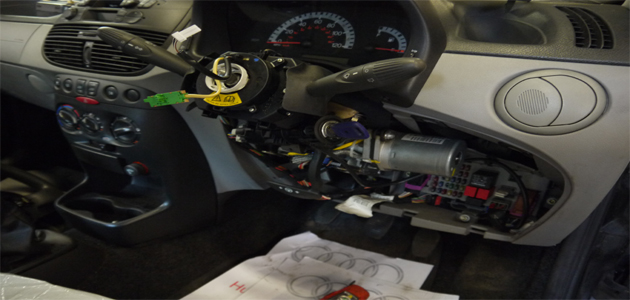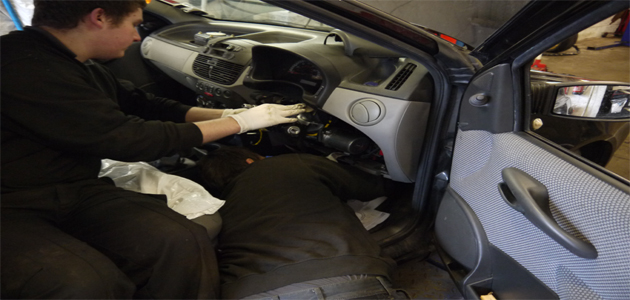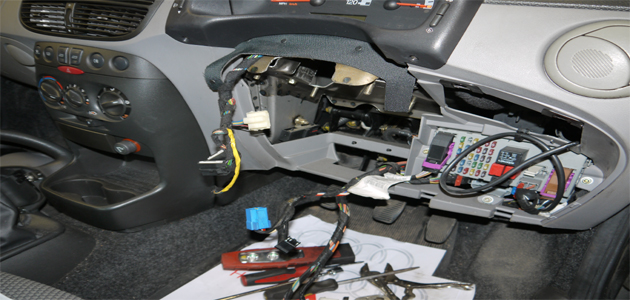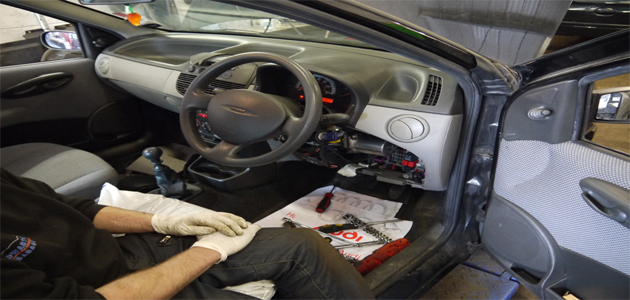
Electrically Powered Steering (EPS) columns are present in many vehicles throughout the world and are in a high volume of cars in the UK. The EPS column is targeted at the small-to-medium vehicle sector, and covers most manufacturers.
Repairs associated with this technology are due to historically large sales in Europe over the last decade for vehicles, such as Nissan Qashqai, Vauxhall Corsa, Fiat Punto, Peugeot 107, Toyota Aygo, Renault Clio and Nissan Micra. Global vehicles like the new Vauxhall Astra and Ford Focus models all use EPS steering systems.
How do they work?
EPS Column systems detect precisely when assistance is required and use a Permanent Magnetic AC or ‘PMAC’ electric motor, to reduce effort by providing steering assist to the driver of a vehicle. Sensors detect the motion and torque of the steering column, and a computer module (ECU) applies assistive torque via the PMAC electric motor coupled directly to the steering column.
This allows varying amounts of assistance to be applied, depending on driving conditions. The system allows engineers to tailor steering gear response to variable rate and variable damping suspension systems, all achieving an ideal blend of ride, handling and steering for each vehicle.
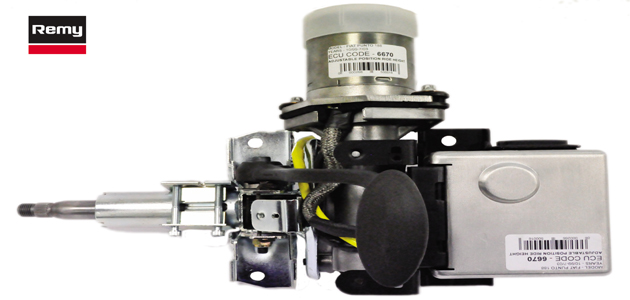
Most EPS Column systems have variable assist, which allows for more assistance as the speed of the vehicle decreases and less assistance from the system during high-speed situations. In the event of component failure, a mechanical linkage – such as a rack and pinion – serves as a back-up in a manner similar to that of hydraulic systems.
Electric power steering should not be confused with drive-by wire or steer-by-wire systems which use electric motors for steering, but without any mechanical linkage to the steering wheel.
Turning green
Automotive manufacturers recognise the need to lead the way in developing and implementing technologies that have a greater positive impact on our environment. This is an age where the term ‘Hybrid’ is common place and where cars are much more reliant upon the efficiencies of electrically powered and controlled systems.
The benefits of specifically Electrically Powered Steering (EPS) include:
- Reduced vehicle fuel consumption
- Reduction in harmful exhaust fumes
- Significant reduction in vehicle assembly time
- Elimination of hydraulic hoses, pumps, reservoirs and associated fluids
- No contaminated fluids as a result of the remanufacturing process
In order to realise the long lasting environmental benefits of EPS systems installed by automotive manufacturers, it is important to understand and be able to remanufacture this technology in the aftermarket to the very highest standards.
No need for the dealer
Until recently, replacing an electrically powered steering (EPS) column was predominantly a ‘dealer only job’; however, Remy has recently developed a range of OE quality remanufactured Electric Steering Columns to provide the aftermarket technician with a high quality product that they can fit with confidence.
Each unit is remanufactured to OE standards and is tested and supplied with a unique test certificate. It’s also calibrated for ‘plug and play’ installation, meaning you can now access a top quality, fully tested and guaranteed EPS column. 80 part numbers will be available by the turn of the year and we’re continually looking to expand our offering.
Training and awareness
For technicians to fully realise the potential associated with EPS column replacement, ongoing training and awareness is crucial. Knowing what is available and how to fit them is important for independent garages to ensure they stay ahead of the competition and to keep their existing customer-base happy.
STEP-BY-STEP
